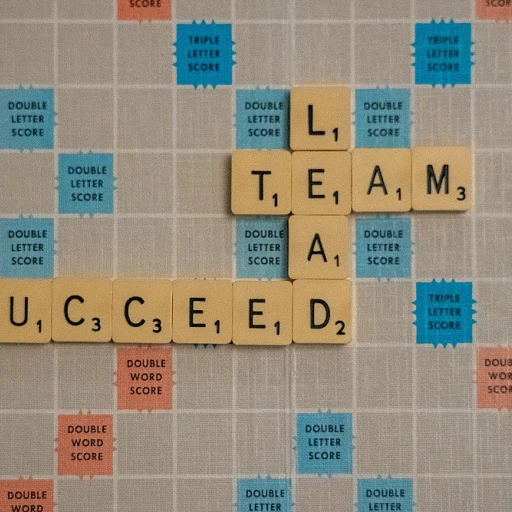
The role of the 9-box grid in HR strategy
The Strategic Role of the 9-Box Grid in HR Initiatives
The 9-box grid plays a pivotal role in enhancing an organization's HR strategy, particularly when it comes to performance and potential. It provides a visual framework that guides managers in assessing employees across a spectrum of competencies and potential growth areas. This is achieved by plotting individuals within a three-by-three grid, with axes typically representing the level of employee performance and their potential for development.
Properly leveraging the 9-box grid facilitates a more structured and informed review of talent within the organization. By distinguishing between high performers, moderate potential employees, and those exhibiting low performance or low potential, managers can tailor their talent management strategies effectively. This grid not only aids in pinpointing current high potential individuals but also helps in identifying future leaders who might be hidden in the ranks of moderate or low performers.
The use of a 9-box talent grid also intertwines with the bigger picture of HR's strategic planning and development goals. Integrating the data derived from these grids allows a company to align its HR processes with organizational goals. For instance, it informs decisions on succession planning, directing leadership management programs to nurture and bolster the skills of identified future leaders.
To delve deeper into the practical application and mastery of this grid, consider exploring insights on mastering the 9-box talent grid for HR success, which offer detailed guidance on integrating it smoothly within your HR framework.
Implementing the 9-box grid effectively
Steps for Seamless Implementation
To effectively implement the 9-box grid, a well-structured approach is crucial. Following certain key steps can streamline the process, leading to accurate evaluations of employee performance and potential.- Define Criteria: Begin by clearly defining the criteria for performance and potential. This involves understanding what constitutes high, moderate, and low performance and potential within your organizational context. Determining these benchmarks ensures that all employees are assessed on a uniform scale.
- Gather Accurate Data: Collect comprehensive data on employee performance reviews and potential. This includes feedback from team members, past performance data, and insights from talent management initiatives. Accurate data is the backbone of a reliable 9-box grid, as it provides a factual basis for positioning employees.
- Engage Managers: Managers play a pivotal role in the effective usage of the 9-box grid. They should be trained to understand the grid's mechanics, including how to interpret employee performance and potential accurately. Managers' insights are valuable during talent reviews, offering a deeper understanding of individual strengths and areas for development.
- Facilitate Constructive Discussions: Holding discussions among managers and HR leaders can bring to light varied perspectives on employees. These discussions should focus on placing employees accurately within the grid, while also recognizing the nuances that data alone may not reveal. Collaboration ensures a more holistic talent review process, paving the way for better leadership planning.
- Link to Succession Planning: The insights gained from the 9-box grid should seamlessly integrate into succession planning efforts. Identifying high potential and high performance employees aids in grooming future leaders, while those identified as low performers can receive targeted development opportunities.
- Align with Organizational Goals: Revisit organizational goals regularly to ensure that the grid aligns with them. Employees who excel in aligning their skills with company objectives are often the ones who help drive future success. This alignment reinforces the strategic value of the 9-box grid in performance management.
Evaluating employee potential with the 9-box grid
Assessing Employee Potential Through Strategic Analysis
In the realm of talent management, evaluating an employee's potential is a keystone of effective performance reviews. The 9-box grid, respected for its robust framework, offers a systematic approach to this evaluation process, merging both performance and potential into a coherent strategy. The grid box model acts as a visual representation of where an employee stands in terms of current performance and future capabilities. By placing individuals within this grid, organizations can make informed decisions about talent development and succession planning. High performers with high potential are earmarked as future leaders, while those demonstrating moderate potential could benefit from targeted skill development. Talent reviews using this method involve detailed data analysis. Managers and HR professionals are encouraged to look beyond numbers to understand the nuances of employee potential. These assessments consider performance achievements alongside innate skills and leadership capabilities that indicate an employee's capacity for taking on more substantial roles. Understanding and analyzing data collected in performance reviews is crucial in identifying low performers who might be unable to meet organizational standards and may require intervention. Conversely, identifying high potential employees helps in crafting development paths tailored to strengthen their leadership skills and prepare them for more significant challenges. Throughout this process, it's essential for both managers and HR teams to consider the broader organizational goals, ensuring that the strategic assessment of potential aligns with the company's future vision and planning. For those seeking more guidance on implementing strategic tools within HR, exploring how HR consulting aids in leadership decisions might provide valuable insights. Explore more about the strategic role of talent consulting in HR leadership.Aligning the 9-box grid with organizational goals
Integrating Employee Potential with Business Needs
To effectively align the 9-box grid with organizational goals, it's crucial for HR professionals to connect employee performance and potential with the strategic objectives of the company. This approach ensures that the investment in talent development is coherent with the broader business strategy, allowing for more targeted performance management and succession planning. Using a box model, managers can examine both performance and potential in tandem, helping to identify gaps in skills and leadership within the team. This analysis facilitates better planning for future roles and the development of high potential employees who may become future leaders.- Focus on High Performers and High Potential Individuals
- They are essential in achieving long-term organizational success.
- Often considered for leadership roles, these individuals should be nurtured and provided with opportunities for development.
- Utilizing the Grid for Talent Reviews
- Conduct regular talent reviews to identify employees with moderate potential who could grow with tailored skill development programs.
- This ensures that potential employees are identified, and their career paths are aligned with the organization's direction.
- Balancing Resources Across All Levels
- While it's important to nurture high performers, moderate and low performers must not be neglected.
- Providing support to low performers through targeted development plans can increase employee performance and benefit the company.
The impact of the 9-box grid on career development
Enhancing Career Development Through the 9-Box Grid
Utilizing the 9-box grid in performance and talent management can have a significant influence on career development. This tool offers a structured approach for identifying employees who exhibit high potential for growth, alongside those who consistently deliver outstanding performance. As such, it serves as a pragmatic compass for career planning and development within organizations. The box grid aids in distinguishing between high performers and those with moderate or low potential. Employees placed in the high-potential, high-performance category are often flagged for leadership roles and future leadership training. This clarity in distinguishing talent ensures organizations are prepared for succession planning and can actively nurture future leaders. Moderate potential employees, though not immediately recognized for leadership, can be further developed through targeted training programs. By investing in their skills and understanding their competencies, managers can elevate these employees' capabilities, enhancing the overall effectiveness of the team. Furthermore, low performance or low potential employees in the grid can benefit from a more tailored developmental approach. This scenario necessitates directed management and support to either improve their performance or potentially re-evaluate their role within the organization. At a strategic level, the grid model allows HR teams to leverage data collected from performance reviews to establish a talent review framework. This framework not only drives individual employee development but also aligns collective organizational goals. By consistently evaluating the performance potential, HR leaders ensure that talent management initiatives remain focused and end in meaningful career progression. Ultimately, the 9-box grid is more than a management tool; it is a gateway to fostering an environment of continuous growth and development, positioning organizations to thrive in the ever-evolving business landscape.Overcoming common pitfalls in using the 9-box grid
Common Challenges and Their Solutions
Effectively utilizing the 9-box grid in talent management can bring numerous benefits but also presents several challenges. Here are some common pitfalls that organizations may encounter when implementing this performance and potential assessment tool, along with strategies to overcome them:- Biased Evaluations: One of the most significant challenges is ensuring that employee evaluations are free from bias. Biases may arise from managers’ perceptions of high or low performers, unwittingly affecting the grid box placement. To mitigate this, consistent training sessions on objective evaluation criteria can be beneficial, promoting more accurate performance reviews and talent assessments.
- Lack of Engagement in the Process: Often, employees may not fully engage with the performance reviews or understand the importance of the 9-box grid. This can lead to inaccuracies in future talent planning. To tackle this issue, clear communication about the purpose of the process and its benefits for career development is crucial.
- Insufficient Data for Accurate Assessment: When data on employee performance and potential is incomplete or outdated, it can skew the results on the box grid model. Regularly updated talent reviews and succession planning data are critical to ensuring that the 9-box grid remains relevant and reliable.
- Overlooking Moderate and Low Potential Employees: There is a tendency to focus primarily on high performers and high potential individuals. It's important to remember the value that moderate and even low potential employees can bring to a team. Strategies for development should be inclusive, fostering an environment where all employees can enhance their skills and leadership capabilities.
- Misalignment with Organizational Goals: If the assessments do not align with the organization's strategic objectives, the grid’s utility diminishes. Aligning the grid with broader organizational goals is essential for effective succession planning, ensuring that talent management efforts are supporting future leaders effectively.












